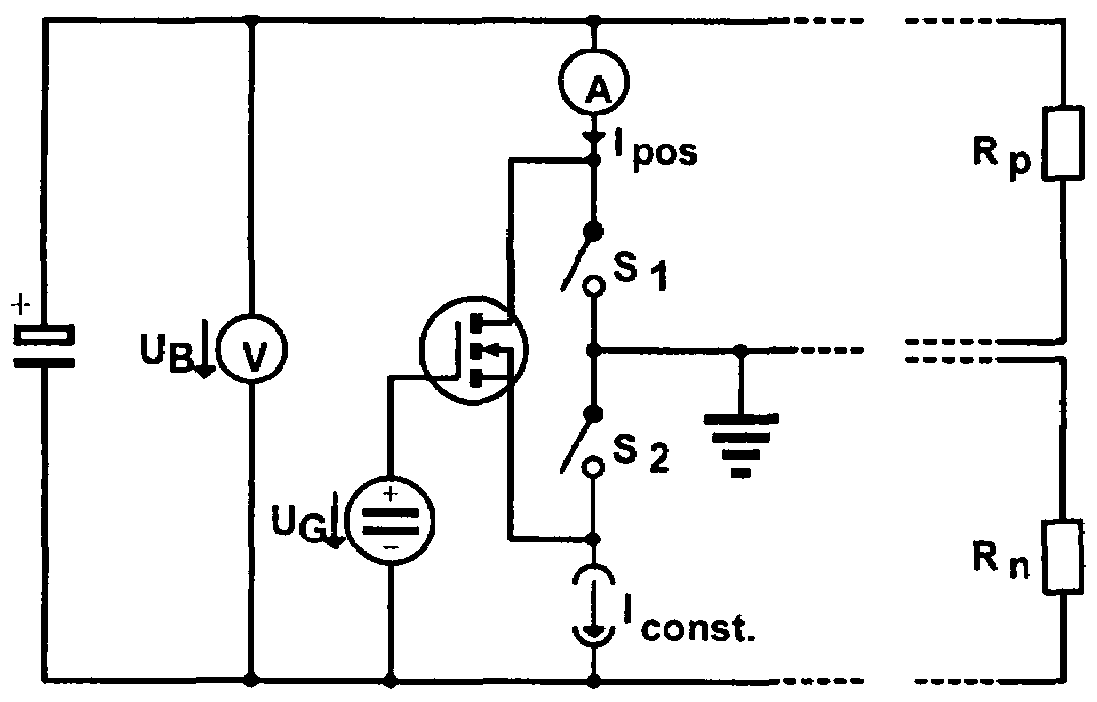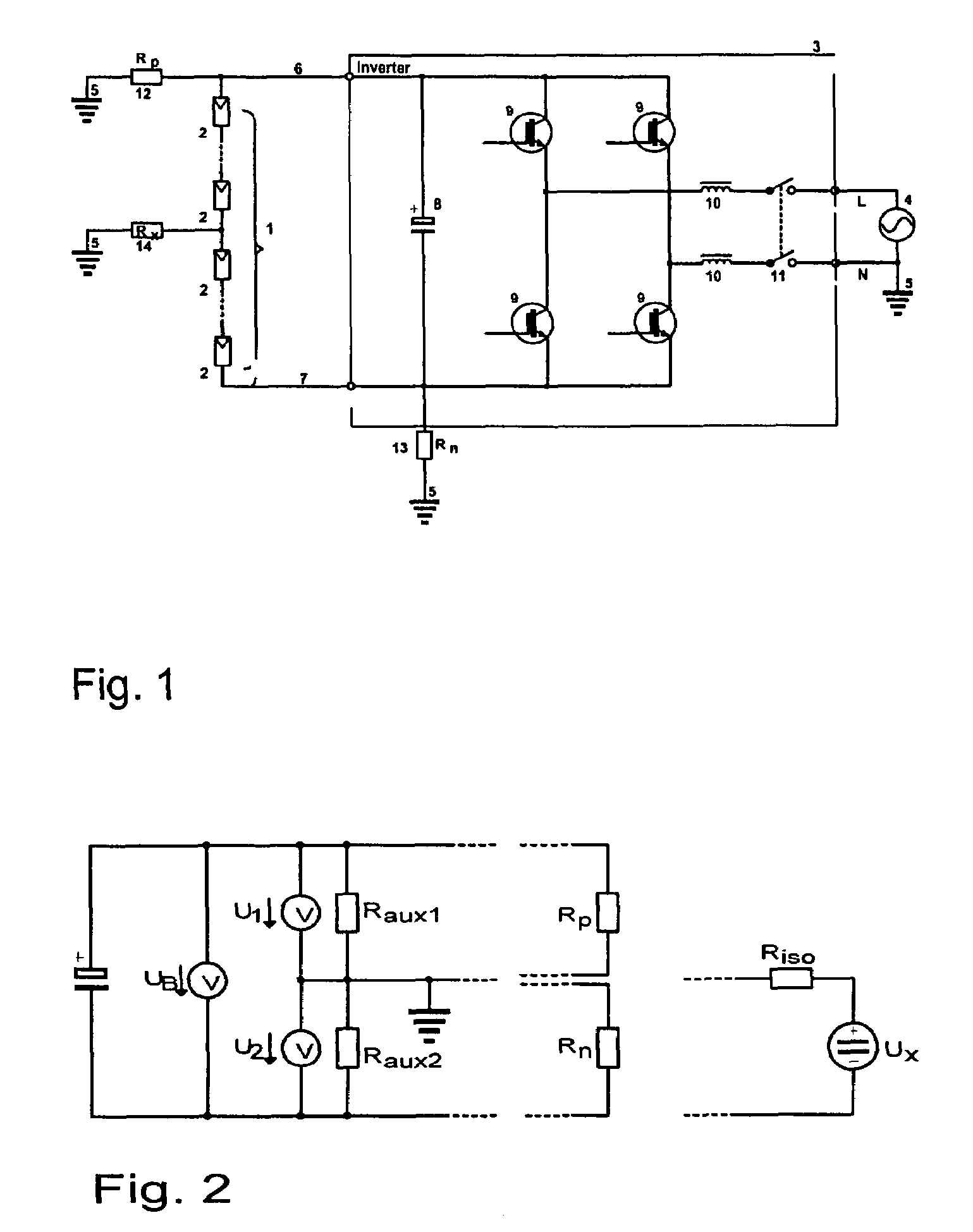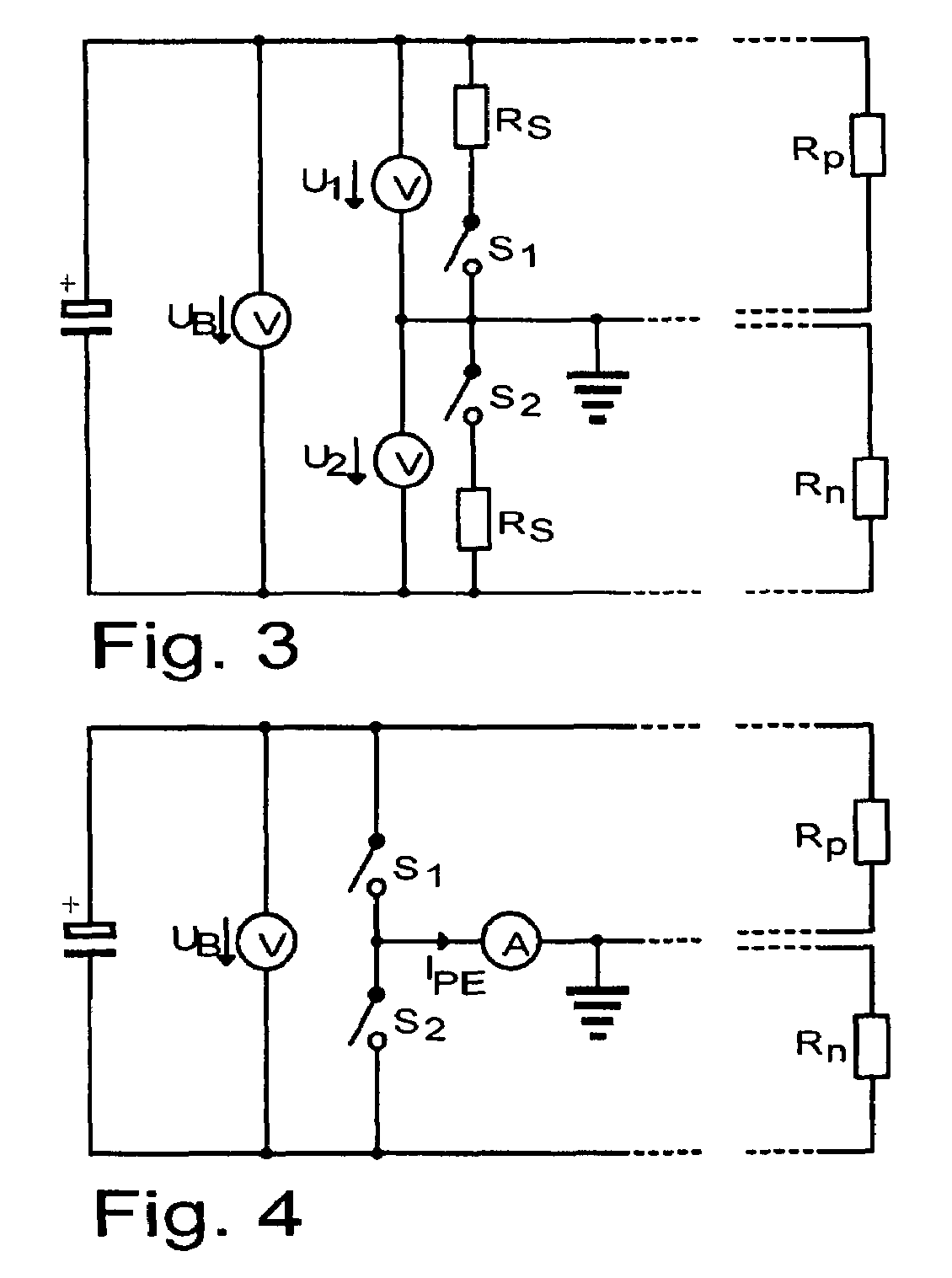Measuring array
a technology of measuring arrays and arrays, applied in the field of measuring arrays, can solve the problems of poor measurement accuracy and increased relative measurement errors, and achieve the effects of less safety loading, high measurement accuracy, and poor measurement accuracy
- Summary
- Abstract
- Description
- Claims
- Application Information
AI Technical Summary
Benefits of technology
Problems solved by technology
Method used
Image
Examples
first embodiment
[0047]FIG. 3 shows the invention. The structure shown is also used in the document EP 0 833 423. In accordance with the invention, a measurement cycle is defined thus that a first measurement is performed with the switch S1 being closed and the switch S2 open and that next a second measurement is performed with the switch S2 being closed and the switch S1 open. As already mentioned, this results in simple equations with little fault influence.
second embodiment
[0048]FIG. 4 shows the invention. A current measurement system is hereby provided between earth 5 and the connection point of the two switches in order to measure the current for calculating the insulation resistance. The measurement cycle remains unchanged with respect to the rule in FIG. 3.
third embodiment
[0049]FIG. 5 shows a preferred third embodiment of the invention. Here, the current measurement performed is indirect. The circuit makes use of an additional constant current source that supplies the constant current Iconst. The switch S2 is not directly connected to the positive pole, but via the current source. In addition thereto, a MOSFET having an appropriate actuation UG is connected in parallel with the two switches S1 and S2. The advantage thereof is that, instead of measuring the current IPE with respect to earth 5, a current Ipos is measured with respect to the positive pole of the installation. Thus the current may be measured readily, e.g., via a shunt, with a microprocessor the reference potential of which is located on this pole. Like in the implementation in FIG. 4, this solution allows for accurate measurement without highly accurate resistances.
[0050]With the method discussed and the measurement arrays described, the insulation resistance Riso of an energized electr...
PUM
 Login to View More
Login to View More Abstract
Description
Claims
Application Information
 Login to View More
Login to View More - R&D
- Intellectual Property
- Life Sciences
- Materials
- Tech Scout
- Unparalleled Data Quality
- Higher Quality Content
- 60% Fewer Hallucinations
Browse by: Latest US Patents, China's latest patents, Technical Efficacy Thesaurus, Application Domain, Technology Topic, Popular Technical Reports.
© 2025 PatSnap. All rights reserved.Legal|Privacy policy|Modern Slavery Act Transparency Statement|Sitemap|About US| Contact US: help@patsnap.com



